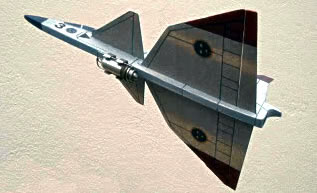Jetex.org was set up in 2004 and, with its active forum, quickly became a comprehensive online resource for free flight jet modellers all over the world.
The original Jetex.org site covered the historical and technical aspects of small rocket motors used in model aircraft, hydroplanes and cars, of which the British post-WWII Jetex motors and modern Rapiers are the best known.
The original Jetex.org site is well and happy, but in retirement. It can still be accessed at: archivesite.jetex.org.
Building on the old website's success, the present Jetex.org site includes lots of new information, a model gallery, links to other relevant sites and a growing online store.
The active forum discusses everything from how to build and fly small model jets, to reports of meetings and collecting vintage motors.
We welcome contributions from fellow modellers, rocket scientists, historians and micro rocket enthusiasts.
We hope you enjoy looking around the site.

Do join the Jetex Forum or contact us if you have any questions or would like to contribute.
And please visit our About Us page – why we're here, how we got here, who's behind it, and, most importantly, how you can help Jetex.org become even better!


